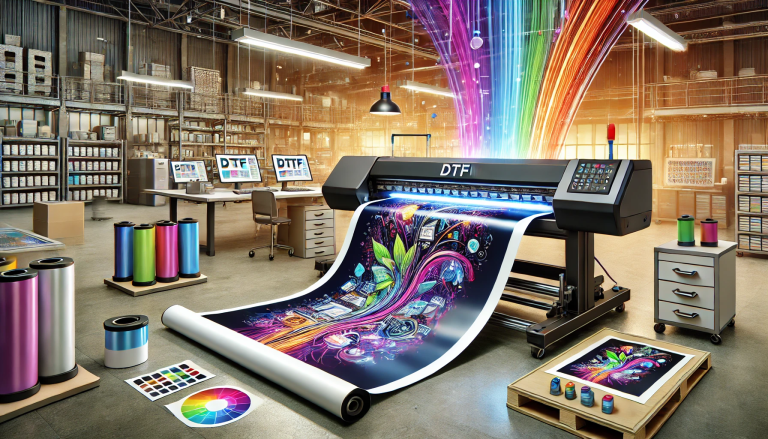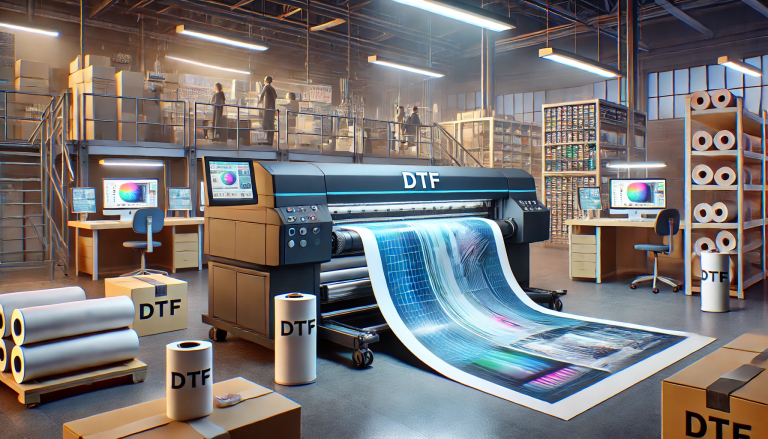“Experience the Magic of Direct to Film Printing – Feel the Difference!” -MAXDTF- DTF sheet Supplier, DTF printing paper Factory, Made in china
Introduction
Direct-to-film printing is a unique printing process that has been used for decades to create high-quality prints. It is a process that involves transferring an image directly onto a film, which is then used to create a print. This process is often used for creating large-format prints, such as posters, banners, and signs. Direct-to-film printing can produce vibrant colors and sharp details, making it an ideal choice for many projects. In this article, we will explore what direct-to-film printing feels like and how it can benefit your project.
Direct to Film Printing: An Overview of the Process and Its Advantages for Photographers and Artists
Direct-to-film printing is a process that has been used by photographers and artists for decades. It is a method of printing images directly onto photographic film, bypassing the need for a negative or digital file. This process has many advantages for photographers and artists, including the ability to produce high-quality prints with a wide range of tones and colors, as well as the ability to produce prints with a unique look and feel.
The direct-to-film printing process begins with the selection of film stock. This is typically a black-and-white or color-negative film, although some photographers and artists may choose to use a positive transparency film. Once the film has been selected, the image is exposed to the film using a light source. This light source can be a traditional enlarger, a digital scanner, or a digital camera. After the image has been exposed, the film is developed in a darkroom or a digital lab.
Once the film has been developed, it is ready to be printed. This is done using a specialized printer that is designed to print directly onto the film. The printer uses a light source to expose the image to the film, and then the film is developed in a darkroom or digital lab. The result is a high-quality print with a wide range of tones and colors.
Direct-to-film printing has many advantages for photographers and artists. It allows for a unique look and feels to the prints, as well as the ability to produce prints with a wide range of tones and colors. Additionally, the process is relatively quick and easy, and the prints can be produced in a variety of sizes. Finally, direct-to-film printing is a cost-effective way to produce prints, as it eliminates the need for a negative or digital file.
Overall, direct-to-film printing is an excellent option for photographers and artists who are looking for a unique and high-quality way to produce prints. It offers a wide range of tones and colors, as well as the ability to produce prints with a unique look and feel. Additionally, the process is relatively quick and easy, and the prints can be produced in a variety of sizes. Finally, direct-to-film printing is a cost-effective way to produce prints, as it eliminates the need for a negative or digital file.
A Guide to Direct to Film Printing: What You Need to Know Before You Start
Direct-to-film printing is a popular printing method used to create high-quality prints on a variety of materials. It is a great choice for those who need to produce large quantities of prints quickly and efficiently. However, before you start printing with this method, there are a few things you should know.
First, you need to understand the basics of direct-to-film printing. This type of printing uses a special type of film that is exposed to light and then developed to create a print. The film is then placed onto a substrate, such as paper or fabric, and the image is transferred onto the substrate. This method is often used for large-format prints, such as posters and banners.
Second, you need to choose the right type of film for your project. Different types of film have different properties, so it is important to choose the right one for your project. For example, some films are better suited for outdoor use, while others are better for indoor use. You should also consider the type of substrate you are using, as some films may not be compatible with certain substrates.
Third, you need to make sure you have the right equipment for direct-to-film printing. This includes a printer, a light source, and a film processor. You should also make sure you have the right supplies, such as ink, toner, and other materials.
Fourth, you need to understand the process of direct-to-film printing. This includes understanding how to set up the printer, how to load the film, and how to develop the image. You should also be familiar with the different types of movies and substrates, as well as the different types of inks and toners.
Finally, you need to understand the safety precautions associated with direct-to-film printing. This includes wearing protective gear, such as gloves and goggles, and ensuring the area is well-ventilated. You should also be aware of any potential hazards, such as fumes or chemicals, and take the necessary steps to protect yourself and others.
By following these steps, you can ensure that your direct-to-film printing project is successful. With the right knowledge and equipment, you can create high-quality prints quickly and efficiently.
Exploring the Benefits of Direct-to-Film Printing: How It Can Enhance Your Creative Projects
Direct-to-film printing is a revolutionary printing technology that has revolutionized the creative industry. It is a process that allows for the direct printing of images onto a film substrate, eliminating the need for traditional printing methods such as lithography or flexography. This technology has opened up a world of possibilities for creative professionals, allowing them to create stunning visuals with greater accuracy and precision than ever before.
Direct-to-film printing offers several advantages over traditional printing methods. First, it is much faster and more cost effective than traditional printing methods. This is because the process does not require the use of plates or screens, which can be expensive and time-consuming to produce. Additionally, direct-to-film printing offers a higher level of accuracy and detail than traditional printing methods, allowing for more precise and intricate designs.
Another benefit of direct-to-film printing is that it is much more environmentally friendly than traditional printing methods. This is because the process does not require the use of inks or solvents, which can be harmful to the environment. Additionally, direct-to-film printing does not require the use of paper, which can be a major source of waste.
Finally, direct-to-film printing offers a greater level of flexibility than traditional printing methods. This is because the process allows for the printing of images onto a variety of different substrates, including plastic, metal, and glass. This allows for a greater range of creative possibilities, allowing for the creation of unique and eye-catching visuals.
Overall, direct-to-film printing is an incredibly useful technology that can greatly enhance the creative projects of professionals in the creative industry. It offers several advantages over traditional printing methods, including speed, cost-effectiveness, accuracy, environmental friendliness, and flexibility. By utilizing this technology, creative professionals can create stunning visuals with greater precision and detail than ever before.
Conclusion
Direct-to-film printing is a great way to get high-quality prints quickly and easily. It is a great option for those who need to produce large quantities of prints in a short amount of time. The prints are sharp and vibrant, and the process is relatively simple. Direct-to-film printing is a great choice for those who need to produce high-quality prints quickly and easily.




